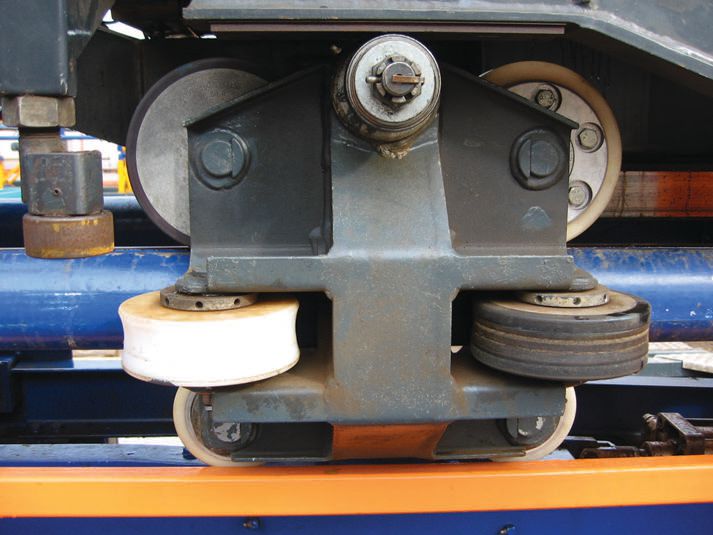Need for speed
Evan Zabawski | TLT From the Editor January 2016
Staying on track requires a lot of wheels.

Mixing and matching wheels can achieve the desired balance.
ROLLER COASTERS HAVE EVOLVED SIGNIFICANTLY with riders always looking for bigger, taller and faster thrills. Though the first permanent areas for outdoor entertainment appeared in Europe in the mid-16th century, and a century later saw Russian Mountain-type rides open in France (which consisted of large, straight ice slides constructed on heavy timber frames), it was not until 1799 that one built in Paris was equipped with wheels.
The first looping roller coaster appeared in Great Britain in 1842, but it still featured a straight track. A gravity-powered switchback railroad used for transporting coal in Pennsylvania opened in 1827 and within two years well-to-do tourists would pay to ride it. Having been replaced in 1872, it operated solely for amusement until it closed in 1932.
In 1884 the Switchback Gravity Pleasure Railway opened in Coney Island to major financial success; it is recognized as the first successful roller coaster in America. Three years later the first Scenic Railway opened in Atlantic City. It was a gravity-powered railroad with indoor sections containing lit scenery and props.
Since train cars were designed with under-carriage wheels and ran in a track, derailments were a possibility as turns became sharper and faster. To combat this, side friction or guide wheels were added on either the inside or the outside of the track to prevent horizontal slippage. This style of roller coaster is known as a side friction roller coaster, and some of the larger designs required a brakeman to slow the train when necessary. The last surviving example in North America, Leap-the-Dips, is located at Lakemont Park in Altoona, Pa., and is the world’s oldest operating roller coaster.
In 1910 John A. Miller designed the safety chain dog, or safety ratchet, that prevented trains from rolling backward down the lift hill if the pull chain broke. Its design evolved from being attached to the track to the underside of the train, producing the distinctive clickety-clack sound. His most important contribution to roller coaster design, the Miller Under Friction Wheel, came in 1919. It is an extra set of wheels that run on the underside of the track known now as simply underfriction or up-stop wheels. This advancement earned him the title of father of the modern, high-speed roller coaster.
The advent of this design allowed for steeper drops and sharper curves by eliminating the possibility of train cars becoming airborne. In 1920 Miller designed the Jack Rabbit, located at the Seabreeze Amusement Park in Irondequoit, N.Y., which was the fastest roller coaster in the world at the time, reaching speeds of 80 km/h (50 mph).
In 1947 the Little Dipper ushered in the era of small steel roller coasters, followed by the prefabricated Steel Mouse design that featured small two-passenger mouse-shaped cars capable of hairpin turns and sharp drops. In 1959 the first tubular steel rail roller coaster opened—the world famous Matterhorn at Disneyland. This style of track led to further innovations like suspended roller coasters where riders hang from the underside of the track.
With up to 24 wheels per train car, rolling resistance must be balanced with rider comfort. Nylon wheels offer less resistance, but their vibration produces a rougher ride and higher track wear. Softer polyurethane wheels vibrate less, giving a smoother, slower ride. Mixing and matching wheels can achieve the desired balance.
Each set of wheels added to the train cars has allowed for greater speeds and changes in rail design have allowed for more twists and turns. Nowadays thrill seekers can enjoy rides exceeding 120 m (400 feet) in height, drops as steep as 121 degrees, reaching speeds over 160 km/h (100 mph) and in the comfort of independently flipping seats. Even so, I am sure a roller coaster designer somewhere is asking: Do you want to go faster?
 Evan Zabawski, CLS, is a business development/reliability specialist for ALS Tribology in Calgary, Alberta, Canada. You can reach him at evan.zabawski@alsglobal.com
Evan Zabawski, CLS, is a business development/reliability specialist for ALS Tribology in Calgary, Alberta, Canada. You can reach him at evan.zabawski@alsglobal.com.